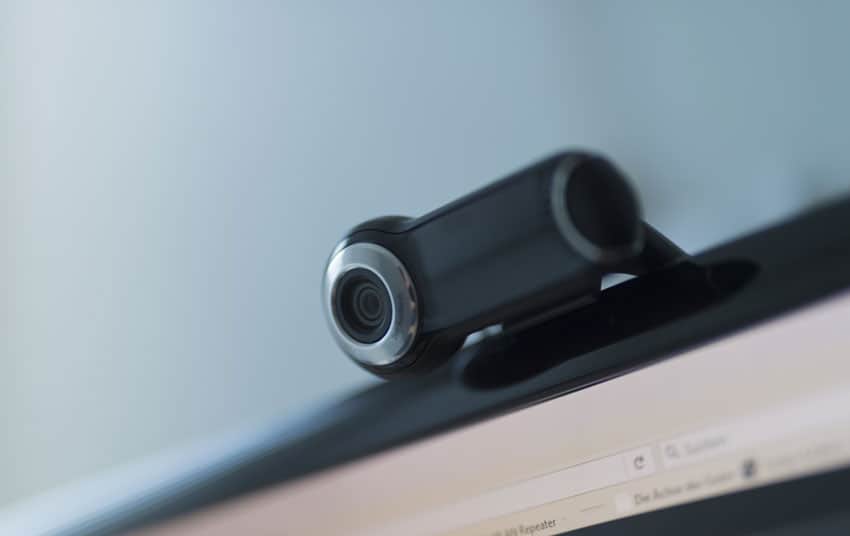In the new normal, where the working world will continue to become even more digital after the pandemic, virtual classrooms are an essential element of the digital learning experience.
For many employees, virtual classrooms are either:
- a novelty to which they’ve had very little exposure.
- a tool they now frequently use but haven’t fully mastered.
Virtual classroom pro tips
At Speexx, we’ve been using virtual classrooms for many years as a tool for successfully continuing language and communication training. We know the opportunities and challenges they offer.
A true specialist in this field is Jo Cook, a speaker and internationally recognized expert in live coaching. She shared her knowledge with us in a Speexx Masterclass Webinar, where she illustrated the key points that make virtual classrooms work and ensure success for both instructors and learners.
Watch the Masterclass Webinar recording “How to Improve Your Virtual Classroom” here.
The challenges of virtual classrooms
As a result of the pandemic, virtual classrooms have grown in popularity over the past year, evolving from a way of learning that was hardly known to a reality that has found its way into most households today.
Similarly, like with all innovations, virtual classrooms do indeed have some challenges that need to be considered to avoid frustration and to optimize its usage.
Technology in virtual classrooms
Often the success of a virtual classroom depends on the quality of the technologies used. It is absolutely essential to test all the technical aspects before a session begins so that any problems can be identified and fixed beforehand. It can be very frustrating when technology doesn’t work the way we want it to (this goes for instructors and participants alike), but the more you know a tool, the quicker you can fix any problems that arise.
Of course, something can always go wrong – but that also rings true with face-to-face sessions. The key is to prepare as much as possible and anticipate any issues arising beforehand, in order to keep interruptions and problems to a minimum. The best way to handle an unexpected problem is to stay calm and address it as discreetly as possible. For this to work, it is critical that you are very familiar with all the tools you plan to use and have stress-tested them thoroughly.
Most virtual classrooms take place via Zoom, Teams, or Adobe Connect and offer similar features. Take the time to get to know your classroom – by using the technology yourself, or with colleagues, in a low-pressure environment; or even by doing a demo with a sales associate or account manager at one of these software tool companies – before you hold a virtual session.
Mandatory webcams in virtual classrooms
For some, the webcam is an integral part of a virtual classroom session. It’s comforting to know that even in a virtual session, you’re sitting in a (virtual) room with real people joining in. There’s a face to every name and you’re not the only person drinking a coffee or laughing at a joke the instructor just made.
On the other hand, others can find the webcam rather annoying. However, some sessions require having webcams switched on and make it a prerequisite for participation.
There are actually many good reasons why someone would rather not turn on their webcam. Some may simply not be comfortable in turning on their camera, due to their mood that day, or they are simply not comfortable in sharing their kids in the background or living space. Another reason could be that their internet connection is not strong enough to share the best quality of video and audio therefore impacting the transfer of important information and what one takes away from the call.
Rather than focusing on the physical presence of a particular participant in a session, it is more appropriate to turn focus to gain active participation and ultimately get the message you want across in the most effective way possible. In order to avoid stripping away the potential for more flexibility within a session, it is best to respect people’s choices involving their webcam presence.
Let the participants in your virtual classroom decide for themselves whether they want to take part in a session with or without their webcam. Most of the time, a turned-off camera has less to do with the participant’s motivation than with technical problems (Internet connection not being able to handle video support) or personal reasons (kids home from school, wreaking havoc in the background).
Promoting interaction in virtual classrooms
In virtual classrooms, the risk of one-sided communication is particularly high. Usually, the instructor doesn’t see the participants, which can then lead to a session that feels more like a one-sided lecture, with little to no participation from the participants. In order to avoid this, the instructor can rely on software tools that facilitate interaction with the participants within the session.
The use of the chat function within your video tool can be very helpful when looking to interact with your participants. Participants can easily exchange ideas and information without interrupting a session. Additionally, you can ask for people to put any questions throughout the session into the chat, that way you can smoothly move through your presentation and quickly answer any adjoining questions that appear in the chat, and participants don’t have to worry about being talked over one another.
Breakout sessions are another great way to get participants to discuss and interact with each other. Have material already prepared that they should collaborate on to complete in these breakout sessions and re-group to go over the results from the rest of the groups. These sessions are perfect to keep participants awake, agile and open to communicate with each other.
The more engaging these tools are, the more likely participants are to maintain focus, reap results from their learning and therefore stay motivated.
Jo Cook recommends preparing for a virtual classroom session the same way as you would for a traditional face-to-face class – but with digital tools instead of a whiteboard, book and projector. This way, you lay the foundation for an open, interactive session and avoid a boring, one-sided lecture or presentation.
Optimize motivation in virtual classrooms
The lines between motivation, interaction and animation in virtual classrooms are somewhat blurry. These elements build onto one another and all work together in different ways. The question of how to motivate learners in virtual classrooms can’t be answered by simply saying that there are interactive tools that you should consider applying or purchasing.
There is more to getting people to participate actively in a virtual classroom session than just offering interactive tools. Perhaps they are shy or afraid of using them incorrectly; maybe both.
Interactive tools are essential to make a session fun and entertaining, but just because these tools are available doesn’t mean that your participants will use them. So how do you encourage a person to actively participate in a virtual space?
The answer here is by being responsive to a person’s needs. Take the time to get to know your participants better and use all the interactive tools and possibilities available to you to make them feel that their active participation is valued and important to the success of the session.
Opportunities in virtual classrooms
For all the potential difficulties that you might encounter when setting up your virtual classroom, the move from face-to-face to digital learning still outweighs the challenges. Virtual training offers so many opportunities for your organization that it will be worth every bit of effort you put in for the transition.
Limitless cooperation for global organizations
The virtual classroom is independent of time and place – or rather, of time-zones and cultures. Here, employees from all over the world can meet and exchange ideas. Virtual classrooms can take place simultaneously and yet at very different moments for each learner. They can accompany your employees throughout the day – in Shanghai into the end of the working day, in Paris for lunch, and in Sao Paulo for a productive start to the working day.
For internationally operating companies and organizations, virtual classrooms can be a particularly amazing and effective tool bringing employees around the world closer together and fostering a group-feeling across all types of borders.
Speexx’ offering, in particular, enables large international organizations to bring their teams closer together in a digital world with improved or completely newly acquired language skills – all as a result of their virtual classroom trainings.
Learning on your own in virtual classrooms
In a virtual classroom, you give your employees the opportunity to further educate themselves in a way that best suits their needs and fits into their schedules. This kind of autonomy is a wonderful opportunity to put one’s own behavior under the microscope.
A virtual classroom can be interactive but can also feel isolating. Each learner is in control – more so than in face-to-face classes – of how actively they want to participate in the session. This offers the individual more freedom and therefore learning successes achieved through independent learning feel all the better and more rewarding.
Pay attention and listen closely to the needs of your participants when designing the layout of your virtual space. Alongside that, using feedback and input is crucial for continuous development and optimization. This can increase the motivation of those joining to actively participate and boost learning among your employees.
Feedback: The 3-5 minute rule
Every three to five minutes there should be some form of interaction between the instructor and the participants in a virtual classroom. This can also be something very small – a short survey, time for questions, a smiley emoji, a thumbs up. This type of feedback is important to ensure that participants understand what they are being presented and to keep them engaged.
These minimal interactions are what Jo Cook calls “digital body language.” A fitting term, as an emoji or a response to a question is what replaces the body language and physical cues that, in a traditional face-to-face classroom, would provide silent feedback for an instructor. He or she can then adapt lectures or lessons to this type of non-verbal communication from the students.
Ultimately, the instructor’s teaching style also benefits from this rule. It gives them the opportunity to try out different tools and introduce them into lessons and presentations. They can also easily consider when preparing for a session, exactly at which point and what kind of feedback is best suited to ensure interaction and consistent engagement together with all participants attending the session.
New digital skills for coaches and learners
In general, virtual classrooms offer endless opportunities to acquire new digital skills. In most situations, there is a collaborative atmosphere in this virtual space, which makes it easier for everyone to try out new tools that they are not yet familiar with, without the fear of embarrassment.
Through the use of digital tools, virtual classrooms also help to promote personal development and the acquisition of new digital skills in a fun way without any pressure to conduct everything perfectly.




